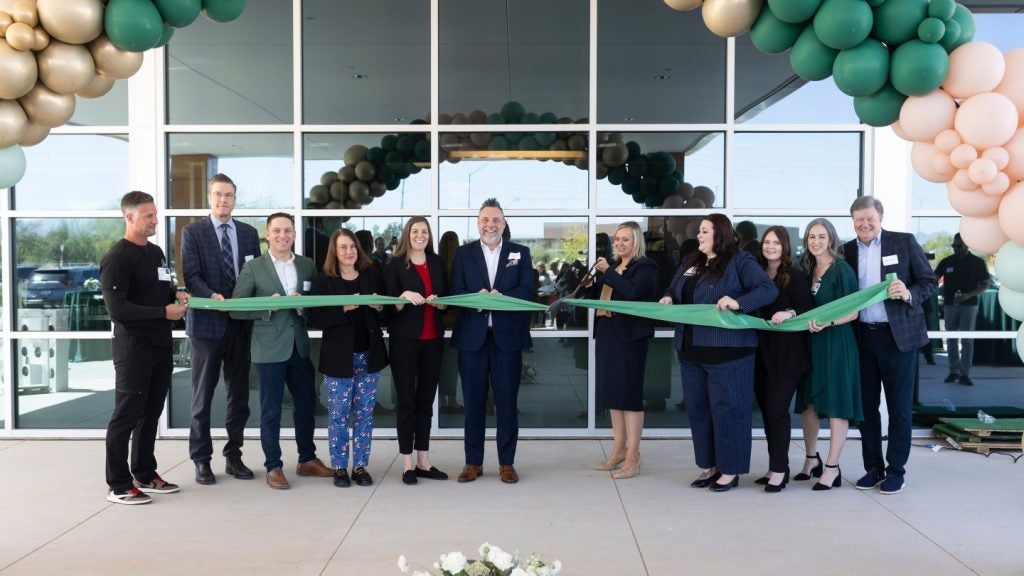
Wound bed preparation has emerged as a key factor in the delivery of patient care and for the recovery of chronic wounds. Resulting from meetings between some of the world’s leading wound care specialists, the “TIME” framework was devised to offer a systematic approach to the management of wounds. But the preparation of the wound bed is continually evolving, as are the technologies and products to support this strategy.
TIME is:
- T = Tissue non-viable or deficient (tissue management)
- I = Inflammation or infection control
- M = Moisture balance
- E = Epithelial (edge of wound) non-advancing or undermined.
The framework is based on the observable characteristics of non-healing wounds and offers a systematic approach to wound healing, which involves eliminating non-viable tissue, controlling infection, restoring moisture balance and promoting epithelial advancement. TIME was established in 2005 with a view to homogenising terminology as well as establishing quantitative and qualitative diagnostic criteria to be utilised in all areas of clinical practice.
TIME has helped clinicians move towards a standardised way of treating chronic wounds through a more holistic approach. But according to Jacqui Fletcher, programme tutor for MSc Advancing Practice and Principal Lecturer BSc (Hons) Tissue Viability at the University of Hertfordshire, there is still much ground to cover before every field of medicine will speak the same language when dealing with chronic wounds.
“Wound bed preparation was only introduced around 2003 and although as a concept it was promising, it wasn’t terribly practical,” explains Fletcher. “Theoretically senior people would talk about wound bed prep but clinicians on the wards couldn’t understand how it was done or otherwise make sense of it. Introducing TIME alongside wound bed prep actually brought the idea into practice because people began to understand it better.
See Also:
“In some ways, the introduction of TIME as a framework has made clinicians use a more common language. Though there are still hundreds of assessment tools, we are starting to see more areas use very similar methods. We’re not there yet by a long way but you can go into most areas of the country now and talk about TIME and they would know what you are talking about.”
How well do you really know your competitors?
Access the most comprehensive Company Profiles on the market, powered by GlobalData. Save hours of research. Gain competitive edge.

Thank you!
Your download email will arrive shortly
Not ready to buy yet? Download a free sample
We are confident about the unique quality of our Company Profiles. However, we want you to make the most beneficial decision for your business, so we offer a free sample that you can download by submitting the below form
By GlobalDataTreatments and causes
Though the wound dressing market has exploded with new products, there have been negligible changes in terms of revolutionary new dressings. To date, there are five main categories of dressings and most of the products available are nothing more than similar versions of their predecessors. Since the 1990s the staple ten products used for wound care have expanded into more than 400. But the real change within the speciality of wound care has been a shift in focus from new dressings and treatments to finding the underlying causes for chronic, hard-to-heal wounds.
“Symptom management is important but it can be purely focused on healing as the outcome,” says Fletcher. “We’re starting to see this is not always important to the patient, but what we should be asking is ‘does it smell, does it leak, does it hurt?’ We should be looking at that process as much as achieving the end outcome and the industry is developing growing recognition of this.
“Manufacturers went through a phase of producing some really fancy dressings, very expensive dressings with lots of science behind them but to the average ward nurse they made absolutely no sense in application. These dressings came with a lot of marketing pizzazz. So people thought they would be the answer to their prayers, but in most cases they have not been effective.
“We have these technologically advanced products, but nothing to tell us when to use them appropriately. So there has been a backlash against advanced dressings because they seem expensive, which they are if you don’t use them on the right wound. But, used in the right way, they are very cost effective.”
The industry is now starting to see a strong focus on diagnostics. The phrase that was used at the World Union Conference in Toronto was theranostics (therapeutic diagnostics). It is about thinking through the process, being clear about what is being done and why it is being done.
A lot of research work is focusing on biofilms. Biofilms have been recognised in a lot of other areas of practice, such as the water industry, oil pipeline industry or dentistry, for a long time. They are only just starting to be acknowledged in wounds, but 60% of chronic wounds involve biofilm.
A biofilm is a collective of microorganisms encapsulated in a polymeric matrix that adheres to either living or inert surfaces. These densely packed cells form an impenetrable barrier to external substances such as antiseptics or antibiotics making treatment of the underlying wounds much more difficult. “The only way to get rid of a biofilm is to physically disrupt it,” explains Fletcher. “And in terms of clinical practice, that is contrary to everything we’ve been doing for a long time.
“Biofilms can only be disrupted physically and mechanically. For the last ten to 15 years, we’ve said – “don’t disturb the wound bed. Don’t rub the wound bed. Don’t mechanically clean it. Certainly don’t take a scalpel or scissors to it because that’s not safe.” What we’ve started to realise with some of these chronic wounds is that unless we start to look at those things and start applying them in a safe way, some of these wounds might not progress.”
Implementation issues
Within the UK nurse population, there are very few who are skilled enough to perform debridements. According to Fletcher, out of approximately 400 nurse specialists in the UK, less than 50% are qualified to be surgical debriders. This lack of skilled nursing can be attributed to limited educational opportunities.
“We plod along trying to do things with dressings and it doesn’t work,” says Fletcher. “If the wound gets really bad the patient is referred to a doctor but doctors tend not to get involved. So these wounds stagger along without doing very much.
“The reason doctors tend not to get involved is because they see it as the nurse’s job,” she continues. “In many ways it is almost a Catch 22. Since the doctors don’t get involved, they don’t know much about wound care – unless you are lucky enough to have a doctor who is interested, which again are few and far between. I can probably name you, without going into double numbers, the total amount of doctors throughout the UK that are interested in wound care.”
Fletcher believes meaningful change can only be effected through a better multidisciplinary approach to the treatment of chronic wounds, coupled with better education. The science needs to be brought together with clinical practice because the scientists are often working in isolation. Scientists invent clever technologies but when applied to the patient, clinicians often find they do not work.
“There are quite a few multidisciplinary organisations operating,” says Fletcher. “They are trying to bring together research, education and clinical practice, which is crucial because all of those three elements must work together in parallel.
Focus on diagnosis and education
“Over the next five to ten years the big thing will be diagnostics; focusing on what’s going wrong and why because there are a huge number of wounds that heal despite what we do to them,” says Fletcher. “With the average surgical wound, you could almost stick a plaster on it and it will get better as long as the patient is well, whereas chronic wounds are problematic because of things that are wrong with the patient. Whatever dressing you put on, they are not going to get better unless you address the underlying problems. I think what we are going to see is a real focus on getting to the bottom of what is wrong with these wounds.”
Current research has been focused on providing the tools necessary to diagnose the underlying cause of slow-to-heal, chronic wounds, in a clinical setting as well as in the community.
For example, a company in Bedfordshire, UK recently showcased a diagnostic prototype, similar to a pregnancy test stick, which allows clinicians to take wound exudates and drop it into a specimen window. From this sample, it can give information about the particular wound, identifying specific proteinases that are detrimental, such as enzymes that break down collagen. Products such as these would give clinicians a better idea of which advanced wound care product would be most beneficial for treatment.
Fletcher also anticipates that future changes within the NHS will see modifications to service delivery. “I think wound care will be seen much more as a quality indicator by the NHS,” she explains. “At the moment, only a small number of trusts look at pressure ulcers as quality indicators. I think we will start to see more specialist units and more private companies being contracted in to the NHS. It isn’t a secret that lots of people are already putting forward these ideas and how it will work.
“In some areas, such as respiratory care, there are people who already do this. They say to a PCT “we’ve got specialists in respiratory care and if you give us the contract we will look after all your respiratory care patients and reduce your hospital admissions. We’ll reduce your job budget”. That is obviously very attractive and I think it is going to start filtering out to all the other services, including wound care.”
In the meantime, it is crucial that nurses are better educated in wound care – during their training and post-qualification. There are very few areas in nursing CPD where wound care training is mandatory for a qualification. Within most training, nurses are lucky to get two or three hours focused on wound care. The University of Hertfordshire offers not only a bachelors degree but also a masters degree. There is a lot wound care knowledge available, but most nurses have had limited education in it.
“This won’t change in the near future because of the diversity of subject nurses have to learn about,” adds Fletcher. “But it needs to be recognised because wound care crosses every area of clinical practice. It doesn’t matter if you are a special care baby unit or in mental health or orthopaedic areas of medicine, you will look after patients with wounds and you will look after patients with pressure ulcers. It must be recognised that every specialist area requires clinicians with knowledge in wound care.”







